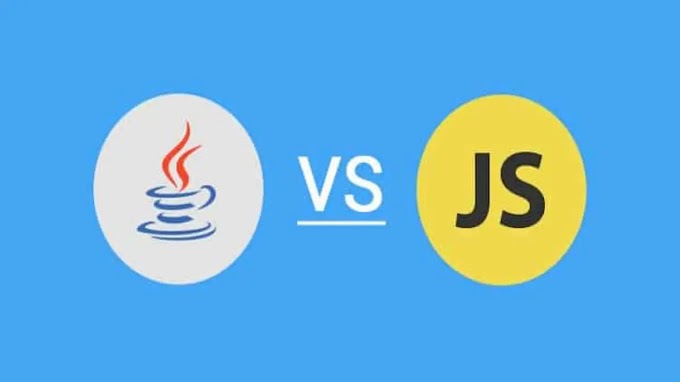INTRODUCTION: Buffering is Dead. Japan Just Killed It.
Imagine a world where buffering is just a joke. Where streaming an 8K movie is as seamless as sending a WhatsApp image. Sounds like science fiction? Not anymore. This is the reality of Japan Petabit Fiber Optic Internet.
Japan has developed an optical fiber system capable of delivering speeds of 1 petabit per second—through a standard-sized cable. This isn’t a speed upgrade. It’s a fundamental redesign of what internet infrastructure can be.
We live in an age where data, speed, and connectivity have become the lifeblood of modern life. Whether you're a student, a remote worker, a gamer, or a patient relying on telemedicine—your experience hinges on your connection. And when speed means faster access to opportunity, it stops being a luxury and becomes a digital right. Japan is now leading the charge into that future.
WHAT IS A PETABIT, AND WHY SHOULD YOU CARE?
1 Petabit = 1 million Gigabits = 125,000 Megabytes per second.
Let’s make it real: a single 10GB movie? With petabit internet, you could download 12,500 of those in a single second. That’s like wiping the entire Netflix library onto your device before you even blink.
To give you context:
On 4G, that download would take 14 minutes
On fiber broadband, around 1.5 minutes
On Petabit fiber? 0.00008 seconds. Done before you know it.
This isn’t just fast.
It’s beyond comprehension. It’s not an upgrade—it’s a whole new category of speed. When data flows this fast, the way we think about the internet has to evolve.
JAPAN’S ROLE: THE NASA OF INTERNET SPEED
Japan has consistently led the charge in connectivity revolutions:
Pioneering FTTH (fiber-to-the-home) in the 2000s
Building high-density fiber grids in the 2010s
And now, chasing ultra-high-speed networks in the 2020s
Key Innovator: NICT – National Institute of Information and Communications
Technology
This government-backed research body has been pushing the boundaries of what's possible:
Developed multi-core fibers (4, 12, even 19 cores)
Achieved 1.02 petabits/sec over 1,000+ km of fiber
Solved major issues like signal loss, heat dissipation, and interference
HOW DOES IT WORK? THE MAGIC INSIDE THE CABLE
1. Multi-Core Fiber
Standard fiber optics use a single light path. Petabit fiber packs multiple cores, each handling its own data stream simultaneously. Think of it as a multi-lane highway at rush hour—but with no traffic jams.2. Wavelength Division Multiplexing (WDM)
This technique uses different light wavelengths to send multiple signals at once. It’s like sending a thousand color-coded messages down the same line—with zero collision.3. Signal Boosting & Error Correction
Using Raman amplification and digital signal processing (DSP), Japan ensures that ultra-fast signals don’t get lost or degraded over distance.4. Thermal Management
Moving petabits means generating heat. Japan has built nano-level thermal control systems that prevent overheating and maintain stable, long-term use.WHERE IS IT BEING USED RIGHT NOW?
As of 2024–25, Japan has started limited deployment in:
Research labs and academic test beds
University supercomputing hubs
Military and space communications
Early 6G network trials
It’s not for consumers yet. But the groundwork for public access is already being laid—and by 2026–28, we could see commercial rollouts.
WHAT DOES THIS MEAN FOR THE FUTURE?
AI + Cloud
Real-time AI updates, decentralized computing, and micro data centers in every device.Gaming + XR/VR
Zero-lag VR worlds. Cloud-rendered games. Entire virtual ecosystems you can walk through.Healthcare
Surgeries from across continents. Instant diagnostics. Seamless global access.Education
Live, interactive holographic classrooms with no buffering.Smart Cities
Hyper-connected infrastructure. Real-time traffic control, energy grids, and disaster response.THE GLOBAL STAGE: JAPAN VS THE WORLD
United States
Progressing in fiber expansion, but still focused on Gbps-level consumer internet. Petabit experiments exist, but not stable or scalable.
China
Focused more on nationwide coverage than extreme speed. Satellite and mesh networks dominate current projects.
South Korea
Aggressively testing 6G infrastructure, but Petabit fiber remains behind Japan’s long-range, multi-core systems.
Bottom line: Japan is the first to combine extreme speed with long-distance reliability. No one else is quite there yet.
CHALLENGES AHEAD
1. Cost – Building Petabit infrastructure is incredibly expensive
2. Device Compatibility – Most phones and PCs today can’t even utilize that kind of bandwidth
3. Security – Faster data also means faster threats. Encryption needs to evolve
4. Energy Use – High-speed systems are power-hungry
5. Talent Gap – Managing such networks requires highly specialized teams
GLOBAL CALL TO ACTION
This is not just Japan’s victory—it’s a global wake-up call. Every nation, every tech leader must ask: are we ready to shatter our limits? Petabit fiber isn’t just engineering genius; it’s a mindset shift that says, “Why wait when real-time is possible?”
If the world collaborates and invests together, this level of infrastructure can redefine global progress. When speed becomes universal, access becomes equal—and possibility becomes unstoppable.
CONCLUSION
Petabit internet isn’t just the next level of connectivity — it’s the beginning of a new human experience. When the web becomes instant, entire industries reshape. From telehealth to space tech, from finance to education, every corner of our lives will be rebuilt around this new speed frontier.
We are not just talking about downloading movies faster. We’re talking about removing time itself as a barrier — between knowledge and the learner, between diagnosis and treatment, between an idea and its execution. That’s what Petabit internet enables. It collapses distance, delay, and digital inequality in one stroke.
And that’s why this matters. If we treat this breakthrough as more than a tech upgrade — as a moment to rethink how the world connects and grows — we might finally build an internet that’s not only fast, but truly fair. The future is wired, and it’s arriving faster than we ever expected.
FAQs
1. What’s the difference between Petabit and Gigabit?
1 Petabit = 1,000,000 Gigabits. That’s a million times faster.
2. Is this available to the public?
Not yet. Testing is underway. Rollout could begin post-2026.
3. Can current devices use it?
No. Existing devices can’t handle that bandwidth. New hardware will be needed.
4. Is it faster than satellite internet?
Yes. Fiber optics have lower latency and better stability.
5. Does it increase cyber risk?
Yes. Faster data can mean faster breaches. Advanced encryption will be essential.
6. How is this tied to 6G?
Petabit fiber will serve as the backbone of future 6G networks.
7. Can it be deployed worldwide?
Yes—if global governments and industries collaborate on infrastructure investment.


%20(2).webp)
%20(2).webp)
%20(1).webp)
%20(2).webp)
%20(3).webp)
%20(2).webp)







Japan nailed it.👌 👌
ReplyDelete